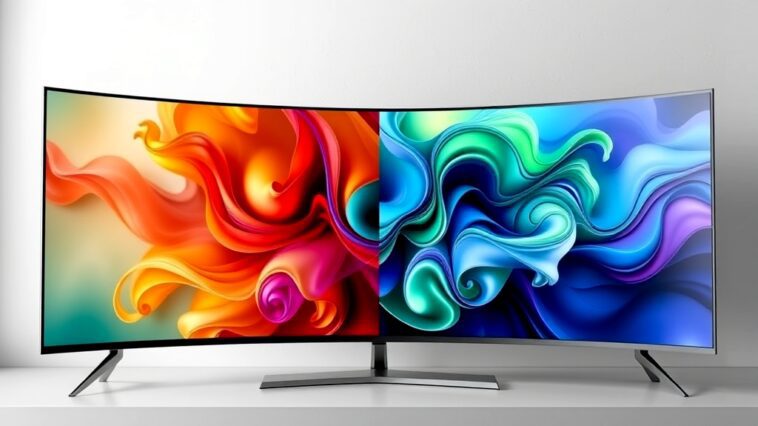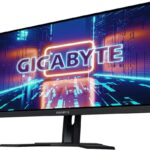Are you thinking about getting a new display or monitor but are confused by the different resolutions like 720p, 1080p, 1440p, 4K, and 8K? Don’t worry! Let’s simplify everything, making it easy for you to understand and enjoy your choice. This guide will walk you through each resolution and help you choose the right one for your needs. Let’s dive in!
What is Screen Resolution?
Before we delve into the specifics, let’s understand what screen resolution means. Screen resolution is the number of pixels that make up the display. The more pixels there are, the clearer and sharper the image will be. Think of it like a puzzle: the more pieces you have, the clearer the picture you can create.
- 720p: This is also known as HD (High Definition). It has a resolution of 1280 x 720 pixels.
- 1080p: Often referred to as Full HD, this resolution measures 1920 x 1080 pixels.
- 1440p: Known as Quad HD (QHD), it has a resolution of 2560 x 1440 pixels.
- 4K: Sometimes called Ultra HD (UHD), this boasts a resolution of 3840 x 2160 pixels.
- 8K: This is the latest and greatest, with a resolution of 7680 x 4320 pixels.
To put it simply, as the numbers increase, so does the clarity and detail of the image!
Key Resolutions Explained
Let’s break down each resolution in detail, focusing on their pros and cons, uses, and what you should consider when choosing one.
1. 720p (HD)
Pros:
- Affordable and widely available.
- Good for casual viewing and streaming.
Cons:
- Lower image quality compared to higher resolutions.
- Can appear blurry on larger screens.
Best for:
- People who watch a lot of TV shows and movies without needing top-notch quality.
- Those on a budget or using smaller screens (like tablets).
Example:
Imagine watching cartoons or family videos on a small screen. The 720p resolution is sufficient for this casual viewing, allowing you to enjoy your favorite shows without breaking the bank.
2. 1080p (Full HD)
Pros:
- Clear and sharp images, ideal for most uses.
- Great for gaming and streaming services.
Cons:
- Might not be as crisp on very large screens (like 70 inches and above).
Best for:
- General use like watching movies, playing video games, or browsing the web.
- Anyone who wants a good balance between quality and cost.
Example:
If you’re playing your favorite video game or watching a blockbuster movie, 1080p will make the colors pop and details stand out, providing a much more enjoyable experience than 720p.
3. 1440p (Quad HD)
Pros:
- Higher pixel density means sharper images.
- Excellent for gaming and productivity.
Cons:
- Requires more powerful hardware to run smoothly.
- More expensive than 1080p.
Best for:
- Gamers who want a competitive edge with clearer visuals.
- Professionals who work with high-resolution graphics, like designers and video editors.
Example:
If you’re a gamer aiming to win, a 1440p monitor can provide a sharper view of your surroundings, helping you spot enemies faster than with 1080p.
4. 4K (Ultra HD)
Pros:
- Extremely detailed visuals with stunning clarity.
- Great for large screens, making it ideal for home theaters.
Cons:
- More expensive and requires a powerful computer or console.
- Limited content is available compared to 1080p or 720p.
Best for:
- Media enthusiasts who want the best home viewing experience.
- Gamers with high-end systems looking for immersive gameplay.
Example:
Picture yourself watching a nature documentary in 4K. The vibrant colors and intricate details of the animals will make you feel like you’re right there in the wild!
5. 8K
Pros:
- Unmatched detail and future-proofing for content.
- Best for very large displays.
Cons:
- Extremely expensive and requires the latest hardware.
- Very little 8K content available right now.
Best for:
- Early adopters wanting the latest technology.
- People planning to use extremely large screens in the future.
Example:
Imagine watching a movie in 8K at a giant theater. The level of detail would be remarkable, but for most home viewers, it’s still overkill.
Choosing the Right Resolution
Consider Your Budget
Price is often the first thing you should consider. If you have a limited budget, it makes sense to go for 1080p, as it is affordable and offers great quality. If you’re willing to spend more for better quality, consider 1440p or 4K.
Know Your Computer’s Capabilities
Before you choose a resolution, check if your computer or gaming console can handle it. Higher resolutions like 4K or 8K require more powerful graphics cards. If your system is older, you might want to stick to 1080p or 1440p.
Think About What You’ll Use It For
- Everyday Use: For web surfing or office tasks, 1080p is generally sufficient.
- Gaming: If gaming is your priority, think about how fast and smooth you want your gameplay. 1440p with a higher refresh rate can provide a competitive edge.
- Movies and Shows: If you love movies, 4K will give you the best viewing experience.
Screen Size Matters
The size of your display also impacts your resolution choice. A 1080p resolution looks great on a 24-inch monitor but can seem fuzzy on a 65-inch screen. Higher resolutions become more beneficial on larger displays, making 4K or even 8K worth considering if you have a big TV.
Screen Size and Pixel Density
Pixel density refers to how many pixels are packed into a given area of the screen. A higher pixel density means a sharper image. For example, a 1080p resolution will look better on a smaller screen than on a larger one because there are more pixels per inch.
Finding the Right Balance
To find the right balance between screen size and resolution, consider how far away you’ll be sitting from the screen. If you’re close to a large screen, higher resolution is essential to avoid seeing individual pixels.
Screen Resolution for Gaming
In gaming, resolution is important, but it’s not the only factor. Many gamers prioritize refresh rates over resolution. Higher refresh rates (measured in Hertz, or Hz) mean smoother gameplay. For competitive FPS games, many players prefer a 1080p monitor with a 144Hz refresh rate rather than a higher resolution with a lower refresh rate.
Example of Gaming Preferences
Imagine you’re playing a fast-paced shooter game. You want your screen to respond quickly to your actions. A 1080p monitor with a 144Hz refresh rate will give you a competitive advantage over a 4K monitor that only runs at 60Hz.
Final Thoughts on Resolutions
When choosing between 720p, 1080p, 1440p, 4K, and 8K, think about your budget, your computer’s capabilities, how you plan to use your monitor, and your preferred screen size.
- If you want something inexpensive and good enough for casual use, 720p or 1080p is the way to go.
- For gaming or professional use, consider 1440p or 4K if your system can handle it.
- If you want cutting-edge technology and have the budget, 8K is available, but it’s generally overkill for most users right now.
Understanding these specifications will help you make an informed decision and ensure you enjoy your new display to the fullest!




